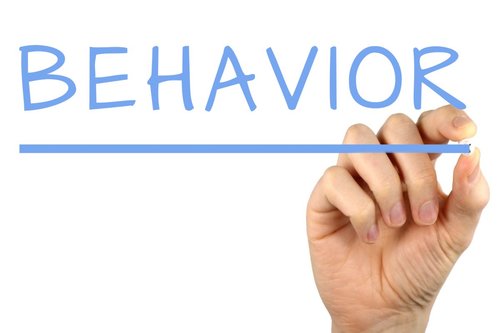It’s really that simple. Whenever you want yourself, or someone else, to do something more often, you just need to follow these three steps.
Step 1: Grease The Path
Make the behavior that you want to do as easy as possible.
Example 1: Running
If you want to go running more often, you should choose a short, easy route right near your house. Place your running clothes (and shoes) in a pile right near your door, so that you have everything you need right when you arrive home after a long day of work. In this example, you’ve made the behavior easier by choosing a convenient and do-able running path, and by making the transition from work-clothes to workout-clothes as efficient as possible.
Example 2: Eating veggies
If you want to eat more vegetables, purchase microwavable tupperware containers, frozen veggies, and some spices. Keep those in your kitchen (or in the kitchen at work) and zap up some veggies when you’re in need of a snack; or a side for your lunch. Very little cooking or effort required.
Example 3: Meditating
If you want to meditate more often, cut down your sitting length. Instead of being overly ambitious and shooting for 15 or 20 minute meditation sessions, do 1 or 2 minutes instead.
Step 2: Lead people down the path
Remind people to do the behavior. This can be done by interrupting them (push notification, text message, nag, etc.), or by placing a physical reminder in their environment.
Example 1: Practicing guitar
Let’s say that you want to practice guitar more often, but you keep your instrument in a case in your closet. Take it out, buy a stand, and keep your guitar in constant view in your bedroom or living room — wherever you spend a lot of time. Whenever you see your guitar you’ll be reminded that you need to practice.
Example 2: Drinking more water
Buy four sturdy water bottles and fill them all up. Place one in your work bag, one on your kitchen counter (where you go to make breakfast or coffee each morning), one on your nightstand, and one in the living room (or wherever you spend the most time). Make sure the bottles are of a good quality metal or plastic, so that they don’t make the water taste bad due to leeching etc. Voila. Now you have water in your path wherever you go at home.
Example 3: Going to the gym
This is similar to the running example in the previous section. Take your gym clothes and place then right in the doorway, so that you collide into them right after you get home from work. A perfect reminder.
Example 4: Calling your parents
Let’s say that you want to make sure that you call your parents consistently. Create a repeating calendar event on your phone so that you’re notified each and every night: “Call mom & dad”.
Step 3: Reward them for walking the path
You should choose behaviors that are inherently rewarding. You don’t want to pick behaviors that require an extra incentive or reward, such as money.
Let’s go over a couple of examples to hammer the point home.
Example 1: Let’s say that you want to exercise more often, but absolutely hate running. It’s painful and makes you feel terrible after. That would be a bad behavior. For whatever reason, your body does not react well to this activity. It’s closer to a punishment than a rewarding/enjoyable activity. Is there another form of exercise that you actually like? Perhaps it’s yoga, weightlifting, or soccer. Or maybe it’s a different team sport, like kickball. Figure out which type of exercise you actually have fun doing. In other words, figure out which type of exercise you find inherently rewarding, and then do it. I hate running, but love going to the gym and lifting weights. So that’s what I do.
Let’s look at another quick example.
Example 2: Let’s say that your doctor tells you that you need to improve you diet and eat more vegetables, but you absolutely hate salads. There’s something about eating raw greens that just sends a sickening shudder through your stomach. Experiment with various cooked veggies. Figure out a couple of key dishes that you find taste. Perhaps you would do well with brussels sprouts, red peppers, and spinach roasted with some olive oil on and pepper them. After you find the dishes you like, you can follow the previous two steps to make sure that you cook and consume them as much as you need. But, if the behavior isn’t inherently enjoyable, good luck — it probably won’t stick.
Does that mean that you’re destined to fail at every behavior that you don’t like doing? Not necessarily, but the odds aren’t in your favor. The only way to make an unenjoyable behavior palatable is by adding what’s called an “extrinsic reward” to the equation. In other words, it’s by adding in some other pleasurable element, whether it’s money, praise, food, a badge, etc. The problem is that these “extrinsic” rewards need to be maintained in order for the behavior change to occur; and that often gets quite expensive. In addition, people easily habituate to extrinsic rewards. At first, it might be exciting to get 5 dollars for washing a car, but after you have 75 dollars in the bank it becomes less and less so.
So, that’s it. The three steps to encouraging a behavior:
- Grease the path
- Lead people down the path
- Reward them for walking the path
When you’re in the planning phase, though, the order is slightly different:
- Figure out the most inherently enjoyable/rewarding behavior
- Figure out how to make it as easy as possible to do
- Set up reminders (digitally, in the physical environment, etc.) to make sure that the behavior is consistently triggered
That’s it!





